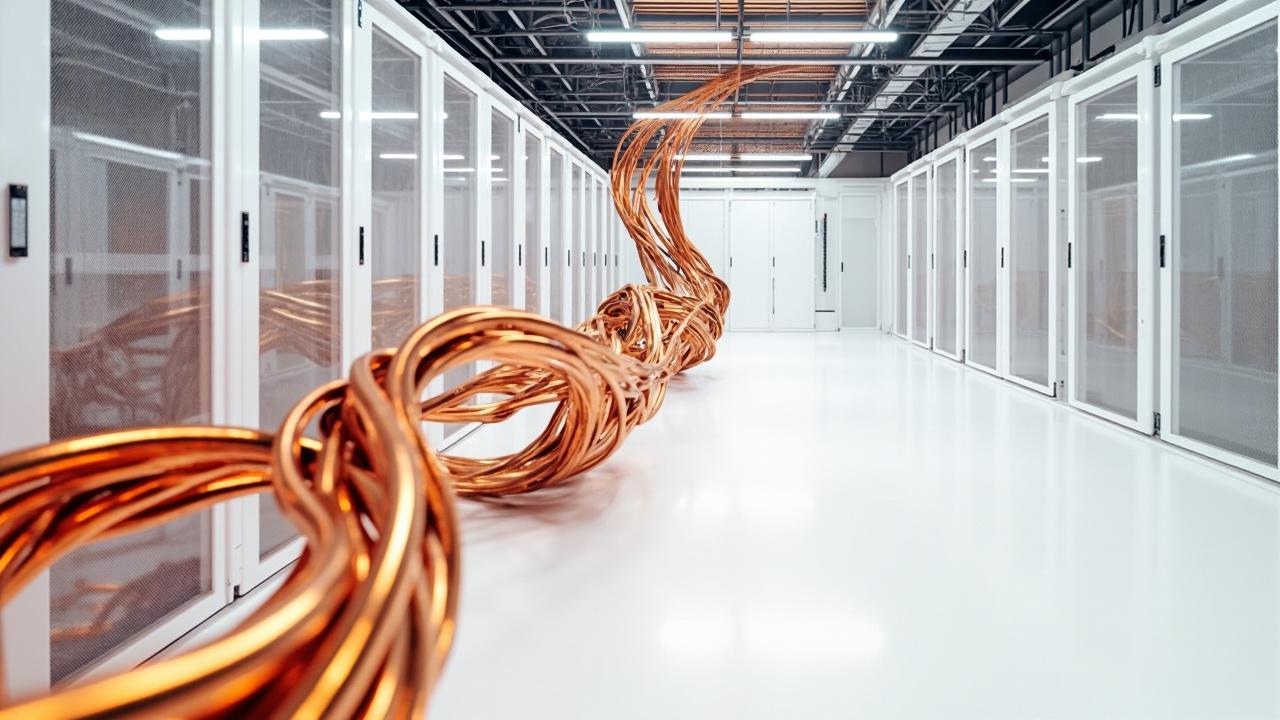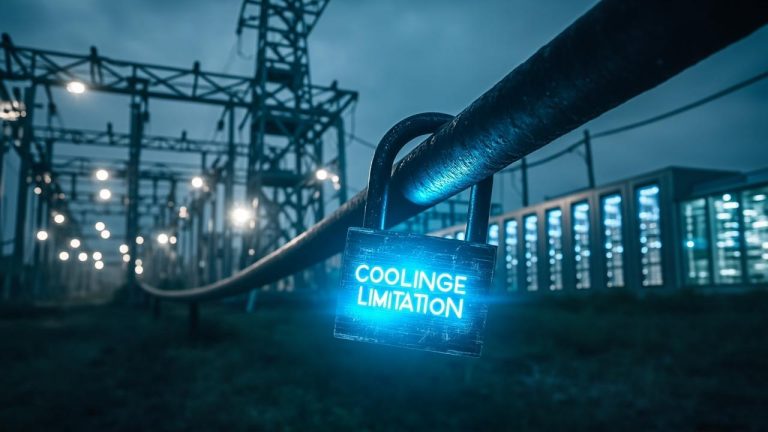The Looming Energy Crisis
The relentless march of technology is reshaping our world, with innovations like generative AI capturing the imagination and promising unprecedented advancements. But behind every digital marvel and technological leap lies an often-overlooked necessity: ai power infrastructure. As our reliance on energy-intensive technologies grows exponentially, the question becomes: can our existing electrical infrastructure keep pace?
The answer, unfortunately, is a resounding no. Our current electrical grid, largely built on outdated designs and technologies, is struggling to meet the demands of the 21st century. From the proliferation of data centers required to power cloud computing and artificial intelligence to the rising adoption of electric vehicles and the increasing reliance on energy-hungry devices in our homes and workplaces, the strain on our existing power grids is reaching a breaking point.
This isn’t just a matter of inconvenience; it’s a looming crisis with far-reaching consequences. Power outages are becoming more frequent and severe, disrupting businesses, crippling essential services, and jeopardizing public safety. Incremental upgrades and patchwork solutions are simply not enough. A fundamental redesign of our electrical blueprint is no longer a matter of choice, but a necessity for ensuring a future powered by innovation and progress.
Beyond Band-Aids
The energy sector is often slow to adopt new technologies, preferring incremental improvements to established systems. While adding more transmission lines or upgrading substations can provide temporary relief, these solutions often fall short of addressing the underlying problem: a fundamentally outdated electrical infrastructure. These “band-aid” fixes are reactive, addressing symptoms rather than the root cause of increasing energy demand and grid instability.
They lack the foresight and adaptability needed to accommodate the dynamic energy landscape of the future. For instance, simply adding more capacity to existing transmission lines doesn’t solve the challenges of integrating intermittent renewable energy sources or managing the increasing demands of electric vehicle charging.
Relying solely on renewable energy sources without significant grid modernization is also insufficient. While transitioning to renewables is crucial for decarbonization, these sources are inherently variable. Solar power production fluctuates with weather conditions, and wind power depends on wind speed.
Without advanced energy storage and a smart, responsive grid, integrating these variable sources can lead to grid instability and increased reliance on fossil fuel-based backup generation. The current infrastructure struggles to handle the bidirectional flow of energy from distributed renewable sources like rooftop solar, leading to inefficiencies and curtailment of renewable energy production. The integration of renewable energy sources requires an advanced ai power infrastructure to effectively manage the complexities of the electric grid.
Furthermore, current approaches often overlook the critical need for enhanced energy storage and efficient distribution networks. Energy storage technologies, such as batteries and pumped hydro, are essential for balancing supply and demand, especially with the increasing penetration of renewable energy. However, widespread deployment of energy storage is hampered by high costs, technological limitations, and regulatory hurdles.
Similarly, outdated distribution networks contribute to significant energy losses during transmission and distribution. These losses can be minimized through investments in smart grids, advanced metering infrastructure, and distributed energy resources, but these upgrades require a holistic and forward-thinking approach that goes beyond simply patching up existing infrastructure.
| Current Solution | Limitation |
|---|---|
| Adding Transmission Lines | Doesn’t address renewable integration challenges or demand fluctuations |
| Relying on Renewable Energy Alone | Intermittency issues require advanced grid management and energy storage |
| Energy storage issues | High costs, technological limitations, and regulatory hurdles |
The Intelligent Grid
The foundation of any future-proofed energy system lies in the intelligent grid. Moving beyond the limitations of our current infrastructure necessitates a paradigm shift towards smart technologies capable of optimizing energy flow and enhancing overall grid resilience. The intelligent grid represents a holistic approach to modernizing our power systems, incorporating real-time data, advanced sensors, and sophisticated communication networks.
At its core, the intelligent grid empowers utilities and consumers alike with unprecedented control and visibility over energy consumption. This proactive approach allows for early detection of potential grid failures, optimal resource allocation, and ultimately, a more reliable and sustainable energy future.
Key components of an intelligent grid include:
Incorporating these components into the electrical grid provides immense benefits. For instance, real-time monitoring and control can quickly isolate faults and reroute power, minimizing the impact of outages. AMI empowers consumers to understand their energy usage patterns and adjust their behavior to save money and reduce their carbon footprint.
The ability to manage and respond to the grid using ai power infrastructure becomes increasingly important as renewable energy sources become a larger part of the overall grid infrastructure. Two-way communication facilitates the integration of distributed energy resources, such as solar panels and wind turbines, further enhancing grid resilience and promoting a cleaner energy future.
Decentralization and Distributed Energy Resources (DERs)
Decentralized energy generation offers a pathway to greater energy independence and resilience, moving away from reliance on large, centralized power plants. Distributed Energy Resources (DERs) encompass a wide range of technologies, from rooftop solar panels and small-scale wind turbines to combined heat and power (CHP) systems and microgrids.
These localized energy sources can significantly reduce transmission losses, as energy is generated and consumed closer to the point of use. This proximity minimizes the energy wasted during long-distance transmission, contributing to a more efficient and sustainable energy system.
The integration of DERs also empowers local communities, fostering a sense of ownership and control over their energy supply. Microgrids, in particular, can provide backup power during grid outages, ensuring critical services remain operational. This is particularly valuable in remote areas or regions prone to natural disasters. However, integrating DERs into the existing grid infrastructure presents challenges. Intermittency, particularly with solar and wind power, requires sophisticated grid management strategies to maintain grid stability.

Successful integration also necessitates advanced communication and control systems to manage the flow of electricity from numerous distributed sources. This is where ai power infrastructure solutions can make a large impact. Here are a few key challenges and ways to overcome them:
The potential for community-based energy solutions is immense. Imagine neighborhoods generating their own electricity through a combination of solar, wind, and energy storage, forming a resilient and sustainable energy ecosystem. This vision requires a shift in mindset, from viewing energy as a centralized commodity to recognizing its potential as a decentralized and community-driven resource.
AI-Powered Infrastructure
Artificial Intelligence is rapidly emerging as a crucial tool for managing the complexities of modern electrical grids. Traditional methods of energy management are proving inadequate in the face of increasing demand, fluctuating renewable energy sources, and the need for greater efficiency.
AI offers a dynamic and intelligent solution, capable of analyzing vast amounts of data in real-time to optimize energy flow, predict potential disruptions, and enhance overall grid reliability. The integration of AI isn’t merely an upgrade; it represents a fundamental shift in how we approach energy management.
One of the most promising applications of AI lies in predictive maintenance. By analyzing sensor data from grid components, AI algorithms can identify patterns and anomalies that indicate potential equipment failures *before* they occur. This allows utilities to proactively address maintenance needs, preventing costly outages and extending the lifespan of critical infrastructure.
Furthermore, AI can play a significant role in anomaly detection. Unusual patterns in energy consumption or grid behavior can be flagged immediately, enabling rapid response to potential security threats or system malfunctions.
Furthermore, AI can optimize energy flow based on real-time demand and supply. By forecasting energy demand with a high degree of accuracy, utilities can adjust generation and distribution to minimize waste and ensure that energy is delivered where it’s needed most efficiently. This is particularly crucial for managing the intermittent nature of renewable energy sources like solar and wind.
When renewable energy production is high, AI can direct excess energy to storage or other areas of the grid, maximizing the utilization of clean energy sources. The increasing adoption of renewables necessitates sophisticated management systems, and here, ai power infrastructure proves indispensable.
| AI Application | Benefit |
|---|---|
| Predictive Maintenance | Reduced outages, extended equipment lifespan |
| Anomaly Detection | Improved security, faster response to system malfunctions |
| Demand Forecasting | Optimized energy flow, minimized waste |
The Role of Energy Storage
Energy storage is no longer a futuristic concept; it’s a present-day necessity for maintaining grid stability and maximizing the efficiency of renewable energy sources. As we integrate more intermittent sources like solar and wind, the ability to store excess energy during periods of high production and release it when demand exceeds supply becomes paramount.
This capability smooths out the peaks and valleys of energy generation and consumption, preventing strain on the grid and minimizing the risk of blackouts. Without robust energy storage solutions, we are essentially wasting valuable clean energy and hindering the full potential of renewable resources.
Exploring Diverse Storage Technologies
A variety of energy storage technologies are available, each with its own strengths and weaknesses. Lithium-ion batteries are currently the most prevalent, offering high energy density and rapid response times, making them suitable for a wide range of applications, from grid-scale storage to electric vehicles. Pumped hydro storage, a more established technology, involves pumping water uphill to a reservoir during off-peak hours and releasing it through turbines to generate electricity when needed.
Other promising technologies include flow batteries, which offer scalability and long lifecycles, and compressed air energy storage (CAES), which stores energy by compressing air into underground caverns. The choice of technology depends on factors such as storage capacity, duration, cost, and location-specific considerations.
The economic and environmental benefits of efficient energy storage are substantial. By reducing the need for traditional fossil fuel peaker plants, energy storage contributes to lower greenhouse gas emissions and improved air quality. Moreover, it enhances grid resilience, protecting against disruptions caused by extreme weather events or cyberattacks.
In regions with high renewable energy penetration, energy storage can also help to stabilize electricity prices, reducing volatility and providing greater predictability for consumers. Ultimately, the widespread adoption of energy storage is crucial for creating a more sustainable, reliable, and affordable energy future. Strategic deployment of ai power infrastructure will also improve the efficiency of energy storage facilities.
Policy and Investment
The modernization of our electrical grid is not solely a technological challenge; it’s also a matter of strategic policy and substantial investment. Without supportive governmental frameworks and financial backing, the transition to a more intelligent, resilient, and sustainable power infrastructure will be significantly hampered.
Policy plays a crucial role in setting the stage for innovation, encouraging utilities and private companies to embrace new technologies, and ensuring that the benefits of a modernized grid are accessible to all, regardless of location or income level.
Incentivizing Grid Modernization
Government policies can act as powerful catalysts for change. Tax incentives, grants, and regulatory frameworks that reward utilities for investing in smart grid technologies, renewable energy integration, and energy storage solutions can accelerate the pace of modernization. Streamlined permitting processes for new energy projects, especially those involving renewable sources and distributed generation, are essential to overcome bureaucratic hurdles and expedite deployment.
Additionally, policies that promote energy efficiency and conservation can help reduce overall demand, easing the strain on existing infrastructure and making the transition more manageable. These policies can also encourage the building of the necessary ai power infrastructure to support the grid.
Attracting Investment and Fostering Partnerships
The scale of investment required for a comprehensive grid overhaul is immense, necessitating a collaborative approach involving both public and private sectors. Governments can create an attractive investment climate by establishing clear and consistent regulatory guidelines, offering loan guarantees, and fostering public-private partnerships (PPPs). PPPs can leverage the expertise and resources of private companies while ensuring that public interests are protected.

Furthermore, governments can play a crucial role in de-risking innovative energy technologies through pilot projects and demonstration programs, paving the way for wider adoption and attracting further investment. International collaboration is also key, sharing best practices and pooling resources to tackle shared challenges in grid modernization.
A Future Powered by Innovation
Imagine a world where cities hum with efficiency, powered by seamless energy flows and responsive grids. Picture electric vehicles charging wirelessly as they traverse smart highways, and homes automatically optimizing energy consumption based on individual needs and preferences. This isn’t just a futuristic fantasy; it’s a tangible vision of what’s possible with a modernized electrical blueprint.
The true potential of advancements like AI, IoT, and blockchain technologies will only be unlocked when they are supported by an infrastructure capable of managing their power demands. A robust and adaptable grid is essential to this vision.
Consider the implications of widespread adoption of augmented reality (AR) and virtual reality (VR) technologies, where immersive experiences demand significant processing power and uninterrupted connectivity. Or envision personalized medicine, with AI-driven diagnostics and treatments requiring sophisticated data analysis and high-performance computing. These groundbreaking advancements are on the horizon, poised to revolutionize how we live, work, and interact with the world.
However, their widespread implementation hinges on a reliable and scalable energy infrastructure. We must ensure the lights stay on while powering these compute intensive endeavors.
A future powered by innovation requires a shift in mindset, from simply adding capacity to fundamentally rethinking how we generate, distribute, and consume electricity. It means embracing smart grids, decentralized energy resources, and, crucially, an ai power infrastructure that can optimize energy flow and predict potential disruptions.
By proactively investing in these technologies and embracing a holistic approach to grid modernization, we can unlock the full potential of the innovations that will define tomorrow. We can create a world powered by efficiency, sustainability, and unwavering reliability.
Conclusion
The narrative is clear: our existing electrical infrastructure is creaking under the weight of burgeoning technological advancements. From data centers fueling the artificial intelligence revolution to the increasing demand from electric vehicles, the pressure on our power grids is only set to intensify. Incremental improvements and relying solely on renewable energy sources are no longer sufficient. To truly unlock the potential of a future brimming with innovation, we must embrace a fundamental redesign of our electrical blueprint.
This transformation demands a multi-faceted approach. Smart grids with real-time monitoring and control, decentralized energy resources empowering local communities, and robust energy storage solutions to balance supply and demand are all essential pieces of the puzzle.
Crucially, we must harness the power of artificial intelligence to optimize energy management. The development and implementation of an advanced ai power infrastructure is critical to predicting demand, detecting anomalies, and efficiently allocating resources, ensuring a stable and resilient power supply even with the intermittent nature of renewable sources.
The path forward requires a concerted effort. Governments must enact policies that incentivize grid modernization and attract private investment. Streamlined permitting processes and public-private partnerships are essential for accelerating the deployment of new technologies. By embracing innovation, investing strategically, and fostering collaboration, we can create a future where a robust and sustainable electrical grid powers progress, unlocks new possibilities, and ensures a brighter future for all. The revolution depends on it.
Frequently Asked Questions
How can AI optimize the efficiency and reliability of power grids?
AI can significantly improve power grid efficiency through predictive maintenance, optimizing energy distribution, and managing demand response. Machine learning algorithms can analyze vast amounts of data from sensors and meters to forecast equipment failures, allowing for proactive repairs and minimizing downtime.
Furthermore, AI can dynamically adjust power flow to balance supply and demand, reducing energy waste and enhancing grid stability, especially with the integration of renewable energy sources.
What are the cybersecurity risks associated with integrating AI into power infrastructure?
Integrating AI into power infrastructure introduces cybersecurity vulnerabilities because AI systems are susceptible to adversarial attacks, data poisoning, and model theft. Hackers could manipulate AI algorithms to disrupt grid operations, cause blackouts, or steal sensitive data.
Furthermore, the interconnectedness of AI systems expands the attack surface, making it crucial to implement robust security measures, including encryption, authentication, and intrusion detection systems.
What impact does the increased demand for AI computing have on energy consumption and power infrastructure?
The surging demand for AI computing places a considerable strain on energy consumption and power infrastructure. Training complex AI models requires massive computational resources, leading to a significant increase in electricity usage in data centers.
This escalating energy demand necessitates upgrades to existing power infrastructure, including enhanced transmission lines and increased power generation capacity, to support the growing computational needs of AI.
How can AI be used to predict and prevent power outages?
AI can predict and prevent power outages by analyzing historical weather data, equipment performance, and real-time sensor readings. Machine learning models can identify patterns and anomalies that indicate potential failures, allowing utilities to take preventative measures before outages occur.
By forecasting demand spikes and potential disruptions, AI enables proactive load balancing and resource allocation, minimizing the impact of unforeseen events.
What are the regulatory challenges surrounding the deployment of AI in critical power infrastructure?
The deployment of AI in critical power infrastructure faces regulatory challenges related to data privacy, algorithmic bias, and system reliability. Regulators must establish clear guidelines for the ethical and responsible use of AI, ensuring that AI systems are transparent, explainable, and free from discriminatory biases.
Standardized testing and certification procedures are also needed to guarantee the safety and security of AI-powered power grid systems.




